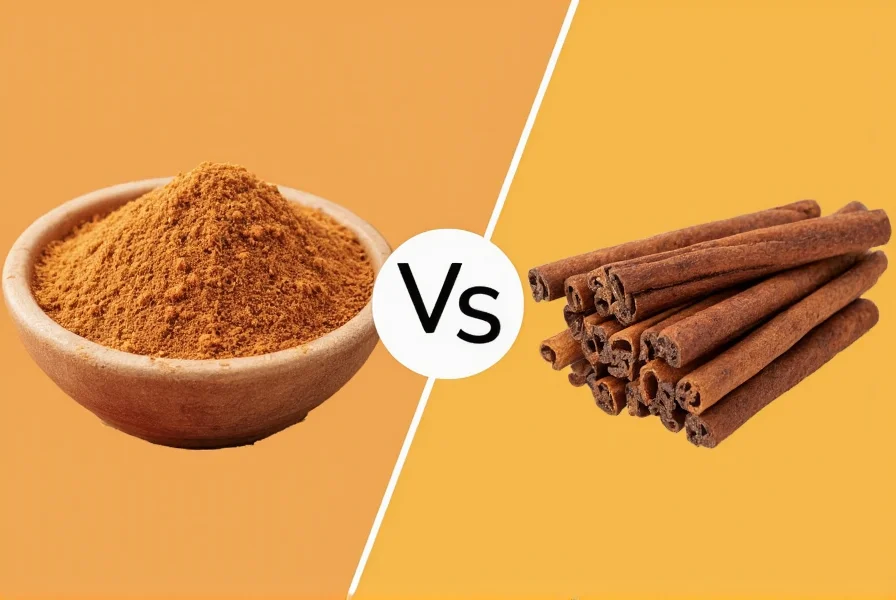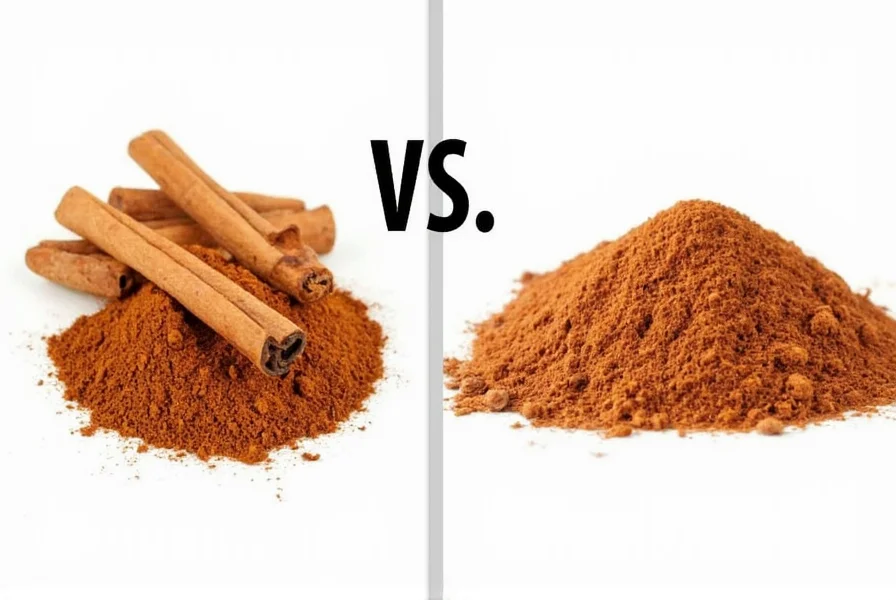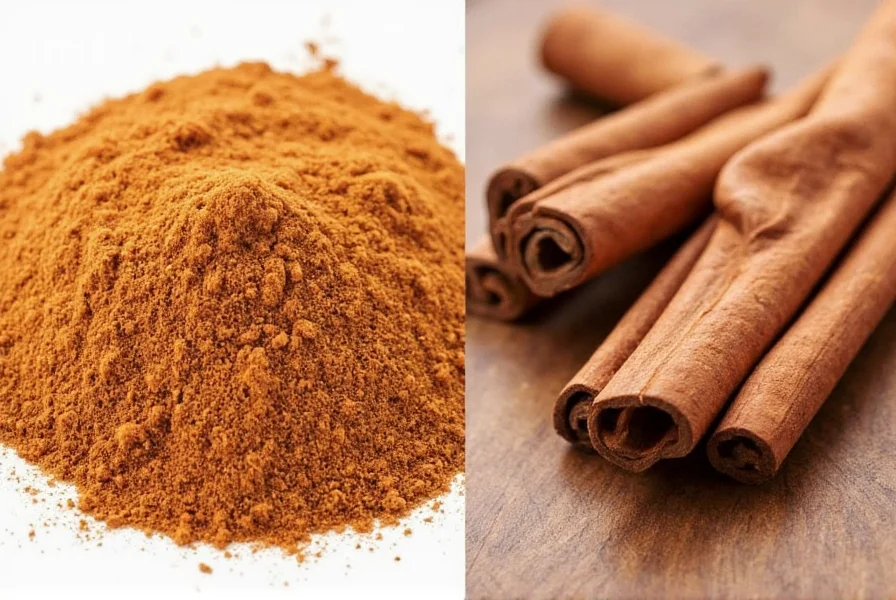When exploring the world of spices, few are as universally beloved yet misunderstood as cinnamon. This ancient spice has graced kitchens and apothecaries for millennia, but modern consumers often don't realize they're working with fundamentally different botanical varieties when they reach for that familiar jar. The distinction between cinnamon types isn't merely academic—it affects flavor profiles in your favorite recipes, potential health benefits, and even safety considerations for regular consumption.
Understanding Ceylon Cinnamon: The True Spice
Ceylon cinnamon, scientifically known as Cinnamomum verum (meaning “true cinnamon”), originates from Sri Lanka and southern India. This variety features multiple thin, papery layers that form a delicate, hollow tube resembling a cigar. When broken, it reveals a light tan to pale brown color with a complex, citrusy aroma that’s noticeably sweeter and more nuanced than its Cassia counterpart.
Chefs specializing in delicate desserts and beverages often prefer Ceylon cinnamon because its subtle flavor won't overpower other ingredients. It's particularly valued in European and Mexican cuisines where balance is paramount. The harvesting process for Ceylon cinnamon is remarkably labor-intensive—workers carefully peel the inner bark from young trees, then roll the thin strips into quills by hand. This meticulous process contributes to its higher price point compared to Cassia varieties.
Exploring Cassia Cinnamon: The Common Variety
Cassia cinnamon, primarily Cinnamomum cassia from China or Cinnamomum burmannii from Indonesia (often called Indonesian or Padang cassia), dominates supermarket shelves worldwide. This variety forms a single thick, dense scroll with a rough, bark-like texture and deep reddish-brown color. Its flavor profile is significantly more intense—bold, spicy, and slightly bitter with pronounced warmth.
Most American and Chinese recipes calling for “cinnamon” implicitly reference Cassia due to its robust flavor that holds up well in hearty dishes like apple pie, cinnamon rolls, and chai tea. The harvesting process differs substantially from Ceylon—workers cut mature tree bark, which naturally curls into a single thick quill as it dries. This more efficient production method makes Cassia approximately 50-70% less expensive than Ceylon cinnamon.
| Characteristic | Ceylon Cinnamon | Cassia Cinnamon |
|---|---|---|
| Scientific Name | Cinnamomum verum | Cinnamomum cassia |
| Origin | Sri Lanka, India | China, Indonesia, Vietnam |
| Appearance | Multiple thin layers, light brown | Single thick layer, dark reddish-brown |
| Flavor Profile | Sweet, delicate, citrus notes | Strong, spicy, slightly bitter |
| Coumarin Content | Very low (0.017g/kg) | High (2.1-6.6g/kg) |
| Common Culinary Uses | Desserts, beverages, delicate sauces | Baking, spice blends, robust dishes |
Lesser-Known Cinnamon Varieties Worth Exploring
Beyond the two primary types, several other cinnamon varieties appear in specialty markets. Saigon cinnamon (Cinnamomum loureiroi) from Vietnam delivers an exceptionally high oil content, making it the strongest-flavored variety—ideal for those seeking intense cinnamon presence in recipes. Korintje cinnamon, a specific Indonesian Cassia variety, offers a balanced middle ground with moderate intensity and sweet undertones.
Malabar cinnamon from India represents another regional variation with distinctive floral notes. While these specialty varieties remain less common in mainstream markets, they’re increasingly available through online spice retailers catering to culinary enthusiasts seeking authentic regional flavors. Understanding these distinctions helps explain why certain recipes specify particular cinnamon types—a crucial consideration for achieving authentic flavor profiles.
Health Implications: Why Cinnamon Type Matters
The coumarin content difference between cinnamon varieties represents the most significant health consideration. Coumarin, a naturally occurring compound, exists in dramatically higher concentrations in Cassia cinnamon (up to 6.6g/kg) compared to Ceylon (merely 0.017g/kg). While moderate Cassia consumption poses little risk for most adults, the European Food Safety Authority recommends limiting daily coumarin intake to 0.1mg per kilogram of body weight.
This distinction becomes particularly relevant for individuals consuming cinnamon regularly for potential health benefits, those with liver conditions, or parents incorporating cinnamon into children's diets. Research suggests Ceylon cinnamon may offer more consistent blood sugar regulation benefits due to its lower coumarin content allowing for safer daily consumption. However, both varieties contain beneficial polyphenols and antioxidants—the key is understanding appropriate usage based on your consumption patterns.

Practical Identification Techniques for Consumers
Distinguishing between cinnamon types requires careful observation. Examine the quill structure—Ceylon forms multiple thin concentric layers that feel almost papery, while Cassia creates a single thick, solid tube. When broken, Ceylon reveals a light tan interior with fine texture, whereas Cassia shows a darker, coarser interior. The scent test proves equally revealing—Ceylon emits a delicate, sweet aroma with citrus undertones, while Cassia delivers an immediate, powerful spicy punch.
For ground cinnamon, visual inspection becomes more challenging but not impossible. Ceylon powder typically appears lighter in color (pale tan) compared to Cassia's deeper reddish-brown hue. When purchasing online, scrutinize product descriptions for specific variety mentions—reputable spice companies will specify whether they're selling Ceylon or Cassia. Don't rely solely on price, as some retailers charge premium prices for Cassia under misleading “Ceylon” labeling.
Optimizing Culinary Applications by Cinnamon Type
Understanding which cinnamon variety best serves your culinary purpose elevates your cooking significantly. For delicate applications like crème brûlée, poached pears, or whipped cream, Ceylon's subtle sweetness shines without overwhelming other flavors. Its compatibility with chocolate, citrus, and stone fruits makes it indispensable in refined dessert preparations.
Conversely, Cassia's robust character proves essential in recipes requiring bold spice presence—think snickerdoodles, cinnamon rolls, or mulled wine. Its intensity holds up against sugar and butter in baked goods, while its warming quality enhances savory applications like Chinese five-spice powder or Moroccan tagines. Professional bakers often maintain both varieties in their pantries, selecting based on recipe requirements rather than treating cinnamon as a monolithic ingredient.

Making Informed Choices for Your Kitchen
Selecting the appropriate cinnamon variety ultimately depends on your intended use and consumption patterns. For daily use—particularly in beverages like coffee or tea—Ceylon provides a safer option due to its minimal coumarin content. When baking for special occasions where intense cinnamon flavor is desired, Cassia delivers the characteristic warmth many associate with traditional holiday treats.
Consider maintaining both varieties in your spice collection: reserve Ceylon for daily applications and delicate recipes, while using Cassia for special occasion baking where its stronger flavor profile is advantageous. When purchasing, prioritize reputable spice merchants who specify the cinnamon variety and provide origin information. Proper storage in airtight containers away from light preserves both varieties' flavor compounds for up to two years, though freshly ground cinnamon always delivers superior aroma and taste.











 浙公网安备
33010002000092号
浙公网安备
33010002000092号 浙B2-20120091-4
浙B2-20120091-4